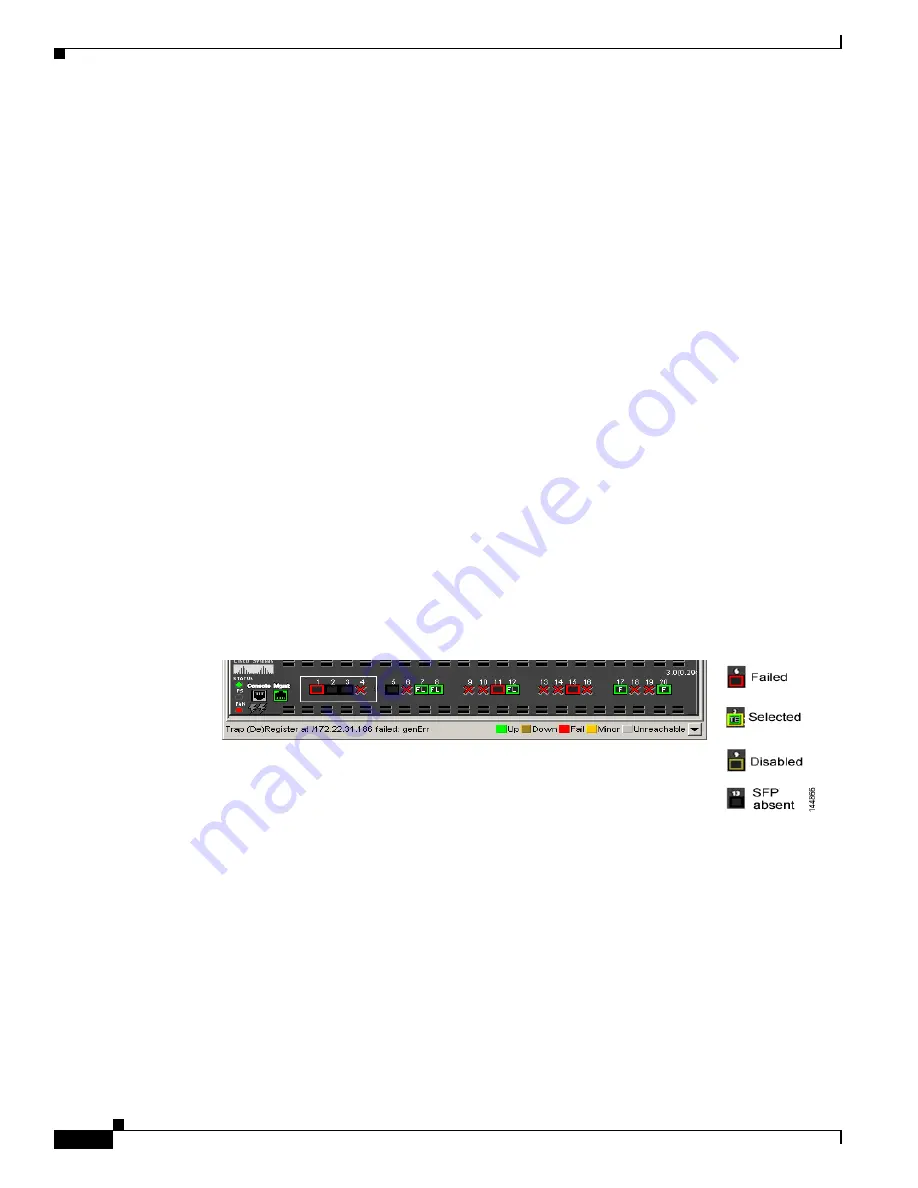
S e n d d o c u m e n t a t i o n c o m m e n t s t o m d s f e e d b a c k - d o c @ c i s c o . c o m
8-6
Cisco MDS 9000 Family Troubleshooting Guide, Release 3.x
OL-9285-05
Chapter 8 Troubleshooting Ports
Overview of the FC-MAC Driver and the Port Manager
Troubleshooting Port States with the Device Manager
Device Manager offers multiple ways to monitor ports, including:
•
Device View
•
Summary View
•
Port Selection
•
Port Monitoring
Device View
Basic port monitoring using Device Manager begins with the visual display in the Device View
(
Figure 8-1
). Port display descriptions include:
•
Green box—A successful fabric login has occurred; the connection is active.
•
Red X—A small form-factor pluggable transceiver (SFP) is present but there is no connection. This
could indicate a disconnected or faulty cable, or no active device connection.
•
Red box—An FSP is present but fabric login (FLOGI) has failed. Typically a mismatch in port or
fabric parameters with the neighboring device. For example, a port parameter mismatch would occur
if a node device were connected to a port configured as an E port. An example of a fabric parameter
mismatch would be differing timeout values.
•
Yellow box—In Device Manager, a port was selected.
•
Gray box—The port is administratively disabled.
•
Black box—FSP is not present.
Figure 8-1
Device Manager: Device View
Device Manager: Summary View
In Device Manager, selecting the Summary View (
Figure 8-2
) expands on the information available for
port monitoring. The display includes:
•
VSAN assignment
•
For N ports, the port world-wide name (pWWN) and Fibre Channel ID (FC ID) of the connected
device
•
For ISLs, the IP address of the connected switch
•
Speed
•
Frames transmitted and received






























